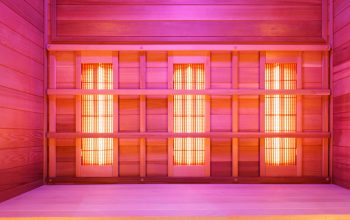ActivCare Senior Living is a place where seniors can live in a home-like environment while they receive assistance from nurses and other caregivers to perform the activities of daily living (ADLs) like bathing, dressing, and eating. The benefits of assisted living include a social environment, exercise classes, and fall prevention assessments.
Cost of assisted living compared to skilled nursing facility
In the United States, the average cost of assisted living is around $4,300 per month. However, the cost can range depending on the services required and the size of the residence.
Skilled nursing facilities are also costly. The national average monthly cost of a skilled nursing home is $7,756 for a semi-private room.
However, the cost can be covered by Medicare. Long-term care insurance can also help with the expense. These insurance policies can cover the costs of skilled nursing, as well as some assisted living costs.
Assisted living facilities offer an apartment-style residential setting with 24-hour assistance. Typically, residents live in shared or private rooms off a central hallway.
Assisted living offers a variety of activities that can improve the physical and mental health of residents. Some facilities will provide transportation to local hospitals and medical offices. A few may even have an on-site health clinic.
Assisted living offers a “rich social environment”
Assisted living has a long list of perks. From assistance with activities of daily living to round-the-clock supervision, residents can rest easy knowing their well-being is in good hands. As the baby boomers hit retirement age, assisted living communities are evolving to make sure seniors aren’t left behind. Among the many advantages are the camaraderie and a good ol’ fashioned socializing.
Although the term “assisted living” has a negative connotation, the reality is that this particular lifestyle choice allows you to live a life of your choosing. Not to mention, you can still entertain family and friends. Plus, you won’t have to pay a fortune for your care. The nitty gritty of assisted living is regulated at the state level. You can learn more about the various types of care by consulting your local Area Agency on Aging.
Assisted living provides assistance for ADLs
The term assisted living is used to describe living arrangements that are designed for individuals who need assistance with activities of daily living. These include activities such as dressing, grooming, toileting, and eating. Some people move to assisted living because they are no longer able to do these things themselves, while others move because their health is failing.
One of the most important things to consider when choosing an assisted living facility is the level of care needed. Levels of care can range from a minimal level of support to a highly specialized level. Choosing an assisted living facility that offers the appropriate level of care is the best way to ensure that your loved one receives the care and support they need.
An assessment of your loved one’s ADLs can help you understand the level of care needed. This can also provide you with a clearer picture of your loved one’s functional capabilities, which can indicate whether it is time to make an appointment with a doctor.
Assisted living facilities assess seniors for fall risks
The number of fall-related injuries among older adults is increasing. Falls are the leading cause of injury-related deaths among the elderly. A fall can result in injuries such as broken bones, head trauma, and dehydration.
Fall prevention is a major issue for assisted living facilities. They assess seniors for fall risks before moving in. They continue to evaluate their residents as their health conditions change. These measures save lives and improve the quality of care.
The CDC has developed a fall risk assessment checklist that can be used by nursing homes. It includes steps to identify high or narrow steps.
An environmental audit can reveal problem areas, such as cluttered hallways or loose cords. Other possible hazards include poor lighting, slippery surfaces, or defective floors.
Assisted living facilities offer exercise classes to improve balance, mobility, and strength
Assisted living facilities offer exercise classes that can help seniors maintain their mobility and improve their strength. Not only does regular exercise improve one’s health, it also helps maintain social connections.
Fortunately, there are many options available, from low-impact water therapy to group fitness and yoga classes. Using the right equipment, a senior can enjoy a high-energy workout while improving their balance.
One class in particular, the Core class, features cardio, resistance, and core training. Designed specifically for older adults, the class offers a wide range of exercises to keep residents moving and fit.
Another option is a more holistic approach, such as the Fit and Fall Proof(tm) program, which provides a variety of moderate-intensity movements designed to enhance the body’s mobility and flexibility. Taking a break from a sedentary lifestyle can improve a senior’s quality of life, and the class is free to members and non-members alike.
